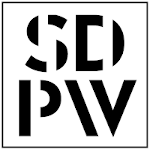Wykaz obszarów badawczych:
| # | Research Area | Dziedzina naukowa |
|---|---|---|
| 1 |
Separation techniques (liquid chromatography and capillary electrophoresis) combined with mass spectrometry make it possible to follow changes in the content of several to thousands of small-molecule compounds in biological or environmental origin materials. Their usefulness depends on the fractionation method, purification, and enrichment of compounds. The apparatus set in combination with the developed methods is called a platform and is used to track changes in the composition of metabolites in living organisms. A large amount of data requires appropriate visualization and statistical analysis strategies to facilitate the detection of important biological or environmental markers. The work carried out in this area will build a research platform for groups of small-molecule compounds of plant origin important for human health. It will be necessary to develop conditions for their extraction, separation, and detection, and finally, to perform data analysis using chemometric techniques.
|
Chemical-Sciences |
| 2 |
Mass spectrometry combined with liquid chromatography-mass spectrometry (LC-MS) is increasingly used in routine medical diagnostics. It happened because LC-MS methods for determining markers of metabolic disorders provide unique sensitivity and selectivity. However, a significant disadvantage of this technique is the need to deliver body fluids to the analytical laboratory. As a result, methods are being developed to determine metabolites in a dry blood sample (DBS). A drop of blood can be applied to blotting paper, dried by the patient, and then sent to the laboratory. The determination of metabolites by LC-MS can be automated and leads to a significant reduction in analysis costs. The work carried out in this area requires the development of methods to determine metabolite groups specific to the selected disease. During the work, it is necessary to consider the stability and degree of homogeneity of tested samples to obtain a sensitive and reproducible analytical method.
|
Chemical-Sciences |
| 3 |
Nowoczesne techniki sprzężone umożliwiają identyfikację i oznaczanie substancji aktywnych w produktach i półproduktach farmaceutycznych oraz umożliwiają ich wykrywanie w płynach ustrojowych. Dobra selektywność i czułość chromatografii w połączeniu ze spektrometrią mas pozwala także identyfikować zanieczyszczenia w preparatach farmaceutycznych. Identyfikacja realizowana jest na podstawie dokładnie wyznaczonej masy monoizotopowej, profilu izotopowego oraz charakterystycznego widma mas zawierającego sygnały pochodzące od produktów fragmentacji badanych związków. Wykrywanie śladowych zawartości zanieczyszczeń, wskazanie źródła ich pochodzenia lub czynników propagujących ich powstawanie jest szczególnie ważne w przypadku ich dużej reaktywności/aktywności biologicznej stanowiącej zagrożenie dla zdrowia pacjenta.
|
Chemical-Sciences |
| 4 |
Od lat pięćdziesiątych XX wieku wyprodukowano ponad 8,3 miliarda ton plastiku, z czego 16% stanowią opakowania żywności. Tworzywa sztuczne ulegają fotoutleniania, kruszeniu, pękaniu, ścieraniu, erozji, biodegradacji i agregacji. Procesy te, zachodzące również podczas przygotowywania żywności pogłębiają ich degradację i fragmentację. Prowadzi to do powstawania mikro- i nanoplastików (MP i NP) o właściwościach fizycznych i chemicznych różniących się od rzeczywistych polimerów i wytworzonych nanocząstek. Mogą one wpływać na skład metabolomu i proteomu krwi, ściany komórkowej oraz cytozolu komórkowego. Wykrywanie takich zmian za pomocą technik rozdzielania połączonych z cząsteczkową i atomową spektrometrią mas oraz opracowanie metody pozwalającej wykrywać markery potwierdzające obecność NP stanowić będzie główny cel badawczy projektu.
|
Chemical-Sciences |
| 5 |
Synthesis of nanomaterials and their functionalization, including methods in the field of green chemistry. Physicochemical characterization and testing of biological activity of nanomaterials. Omics studies using spectroscopic techniques and mass spectrometers hyphenated with separation techniques.
|
Biotechnology |
